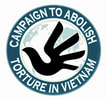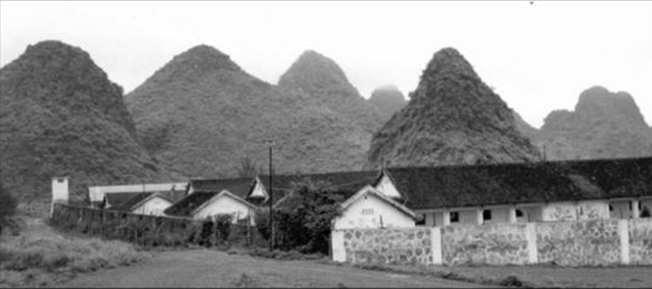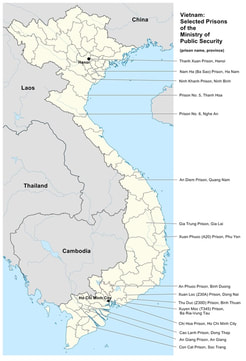Perpetrators, Methods, and Places of Torture in Vietnam
Who: Perpetrators of TortureTorture and mistreatment of political and religious detainees and prisoners is primarily carried out by law enforcement officials under the authority of the Ministry of Public Security’s Department of Criminal Sentence Execution and Judicial Support (previously known as V26, now General Department VIII). They include prison officials, wardens, and guards, as well as provincial, district, commune, and municipal police officers.
In some cases torture is carried out in prisons and detention centers by inmates or detainees authorized by police and prison officials to carry out beatings of political and religious prisoners. Torture is also carried out by soldiers on military bases under the authority of the Ministry of Defense, and by members of the civil defense forces (dan phong), a voluntary security force under the authority of village People's Committee officials that often collaborates with local police. What: Methods of Torture in VietnamPolitical and religious detainees in Vietnam are subjected to a number of different forms of torture by police and prison officials. They are beaten with truncheons, belts, and leather sandals, boxed on the ears until they bleed, slammed against concrete walls, kicked with military boots, and shocked with electric batons.
Some have their heads forcibly submerged in water during interrogation, or are forced to drink soapy water and then punched in the stomach. Others are injected with drugs that cause permanent memory loss and make them numb, weak, and unable to speak and think clearly. Detainees describe being hung up by their handcuffed wrists to the ceiling or the upper ledge of a window while being beaten with batons or shocked with electric rods. One man was forced to crawl on his knees on rough gravel with a piece of prickly fruit on his back, while balancing a piece of wood on his upraised arms. A woman was burned by a piece of heated metal placed against her leg, leaving a three-inch scar. Many are forced to maintain uncomfortable positions, such as sitting, squatting, lying down with arms and legs raised, or standing on one leg, for long periods of time. Others describe how police insert writing pens between their fingers and then tightly tie their hand with a rope, squeezing and crushing the fingers; or set two legs of a chair on the detainee’s foot and then sit on the chair while interrogating the detainee. In addition to physical abuse, police and prison authorities in Vietnam use various types of psychological techniques, some clearly amounting to torture, on detainees. These include isolation, threats, sexual humiliation, stress positions, denial of natural light, water torture, forced renunciation of faith, and erratic scheduling of interrogation sessions. Political and religious detainees have also been subjected to compulsory commitment to mental institutions and pharmacological manipulation (forced medication), which are also considered forms of psychological torture. Several former detainees reported abuses that took place after they were forced to strip naked, such as guards standing on their legs and arms, attaching plastic bottles filled with water to the penis, shooting rubber bands at the penis, using electric shock to inflict pain on the groin and genitals, and conducting humiliating, invasive body searches. One man, whose young child was with him when police arrested and tortured him, told us: “The worst part was that they forced my three-year-old son to sit on my lap the entire time, even though he was crying uncontrollably.” Excerpted from "Vietnam: Torture and Abuse of Political and Religious Prisoners," Campaign to Abolish Torture in Vietnam, 2014. |
Where: Places Where Torture Takes PlaceTorture of political and religious detainees and prisoners is carried out in a range of prisons and detention facilities throughout Vietnam, including the following:
Detention Centers:
In Saigon (Ho Chi Minh City), political and religious detainees are sent for pre-trial detention at B34 Detention Center, operated by the Ministry of Public Security (MPS) Security Investigation Department or to detention centers under the oversight of the municipal police such as Phan Dang Luu Police Detention Center or Chi Hoa Prison and Police Detention Center. In Hanoi, they may be sent for pre-trial detention at MPS Detention Center B14 (Thanh Liet) or to Detention Center No. 1 (Tu Liem), operated by the municipal police in Tu Liem district of Hanoi. Dissidents arrested in provinces far from Hanoi or Saigon are often detained in provincial prisons or police detention centers for pre-trial investigation and interrogation, sometimes with the participation of MPS officials from Hanoi. * For a list of detention centers where political and religious detainees are held, click here. Re-Education Camps:
Political and religious dissidents can also be detained without trial for two-year renewable terms in “compulsory education institutions” (cơ sở giáo dục bắt buộc) – often referred to as re-education camps (trại cải tạo) – that are administered by the Ministry of Public Security. These include"
Excerpted from "Vietnam: Torture and Abuse of Political and Religious Prisoners," Campaign to Abolish Torture in Vietnam, 2014.
|
© 2023 Campaign to Abolish Torture in Vietnam.
All rights reserved. For permission to reprint any of CAT-VN's reports, press releases, or other information please contact us first.
© 2023 Campaign to Abolish Torture in Vietnam.
All rights reserved. For permission to reprint any of CAT-VN's reports, press releases, or other information please contact us first.
All rights reserved. For permission to reprint any of CAT-VN's reports, press releases, or other information please contact us first.


